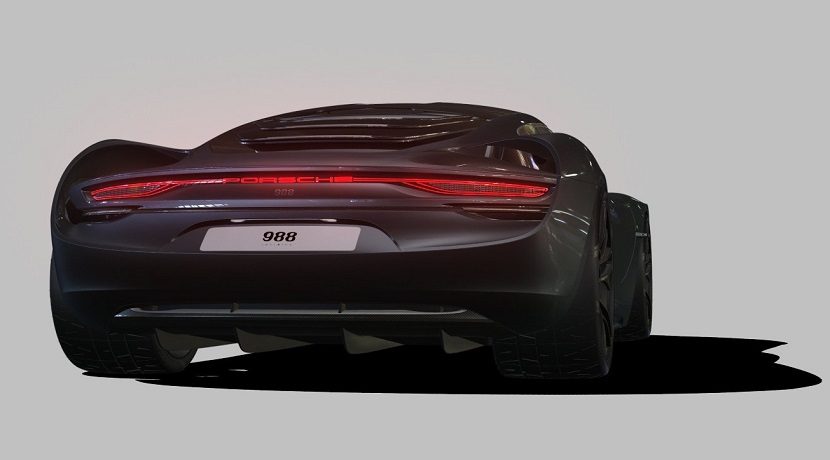Test Nissan Qashqai 1.5 dCi 110 Tekna (with video)
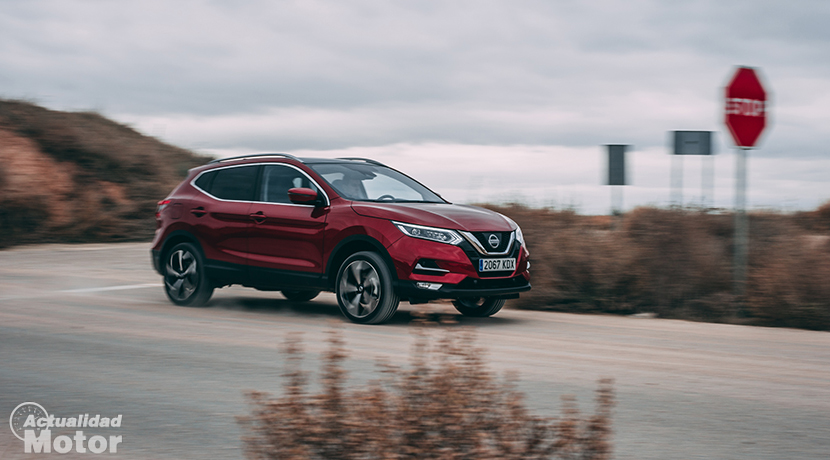
The increase in demand for SUVs does not seem have an end Currently, the SUV and crossover take around 25% of sales in our country, being the C-SUV segment, the compact SUV, the best-selling with a market share of 15% approximately. Within this segment, undoubtedly, the king is the Nissan Qashqai ; model protagonist of this test that today we bring you.
The Nissan SUV has been in the market for a decade, being the model that made this category fashionable . A few years ago it launched its second generation, which, in 2017, has been renewed with a restyling that slightly varies its aesthetics but, above all, improves its rolling quality, its comfort of walking and its perceived quality in every way. Today we bring you the Nissan Qashqai test with 1.5 HP diesel engine of 110 HP and one of the highest finishes, the Tekna.
The Nissan Qashqai is the best selling SUV in our country with much difference compared to other competitors. The Japanese has registered almost 26,000 units in the first eleven months of 2017 (from January to November), or what is the same, about 8,000 units more than its immediate pursuer. At this point, no one in their right mind can doubt the commercial success of the Qashqai , a vehicle that took the Japanese firm from a very complicated situation.
Without great aesthetic variations, although appreciable

As we said, this model belongs to the segment of the SUV compact . The exterior dimensions of the Nissan Qashqai are 4.39 meters long, 1.81 wide and 1.59 meters high. To this data we must add a battle of 2.65 meters, which will be responsible for granting more or less space for the legs in the rear seats and also provide a good aplomb to the vehicle on express roads.
Aesthetically there are no major changes with respect to its predecessor, as we remember that it is a restyling and not a totally new model. The vast majority of variations are in the front , appearing the new main grille with that characteristic "V" chromed, a new bumper, the hood with more marked tension lines, new design for fog lights and Some LED headlights that can now adapt their lighting in curves to improve safety, ie, they are directional.
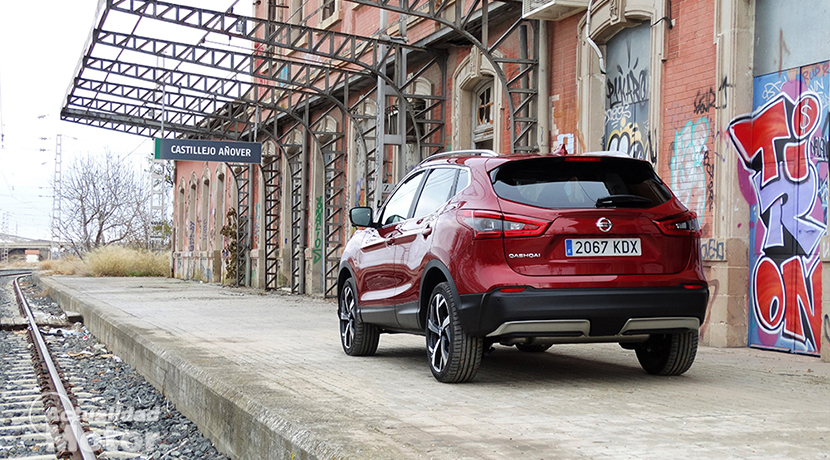
And in the back they practically only replaced the previous bumper with a sturdier one and the lights pilots . The latter are made of LED and, although they maintain the main design of the predecessor model, they now have a greater volume, which gives it a more distinctive character. And little more to add, apart from two new body colors (Vivid Blue and Chestnut Bronze), in this field of exterior design of the Nissan Qashqai; so let's move on to the passenger compartment.
Spacious for 4 adults, although the trunk is not the best
Habitability interior of this model remains identical to that of the previous version, so we are still facing a spacious car.It is not the most spacious cars in its second row, but that does not mean that people of 1.80 will feel overwhelmed. The worst height is that of height, because the large panoramic roof lowers a few centimeters the height and perhaps the tallest ones touch with the hair on the ceiling. However, I, who is about 1.76, have about three or four fingers to rub against my head.
The space for legs is correct , taking up space There's plenty of it in relation to the backrest of the driver's seat - which is placed in my driving position. A fifth occupant can see something "tight" , because if his height is medium he can rub his head on the ceiling. In addition, and as usual in this segment C-SUV, the width is not good for three adults make a long trip in these later places. What we do miss somewhat is the lack of regulation of the backrest and longitudinal adjustment of the bench, which would allow a little more modular interior space and cargo capacity of the trunk. We're going with the boot.
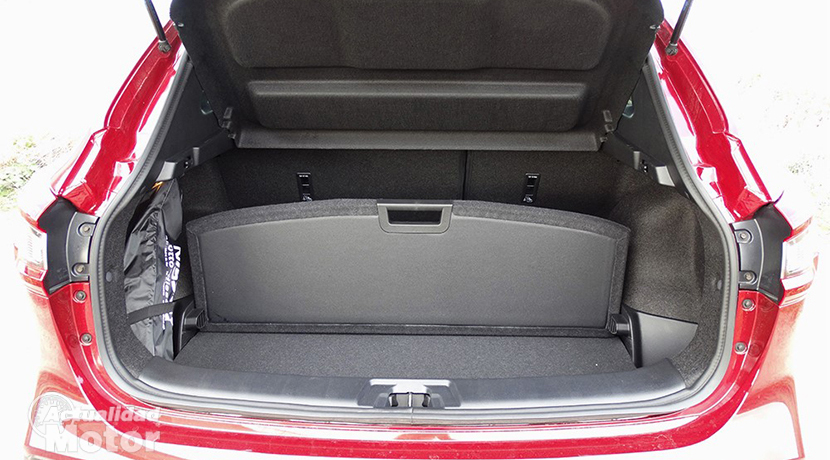
The trunk of the Nissan Qashqai has a cargo volume of 430 liters. It is more or less in the middle of the category, although it is true that direct rivals such as Seat Ateca significantly outperform it. In the Qashqai we have double height floor and the possibility of separating the cargo space to, for example, better distribute the objects or prevent them from moving too much while driving. Folding down the second row of seats we get a load capacity of almost 1,600 liters .
Inside practically only change the steering wheel
And regarding the interior design , the changes of this restyling are not too deep. The most notable is the steering wheel, which is now more sporty visually and has a flat area at the bottom. In any case, the management of its buttons is simple and it takes us little time to get used to its location. An element that is attractive is the large panoramic roof which, despite not being able to open, brings a great luminosity and a sense of space to the passenger compartment.
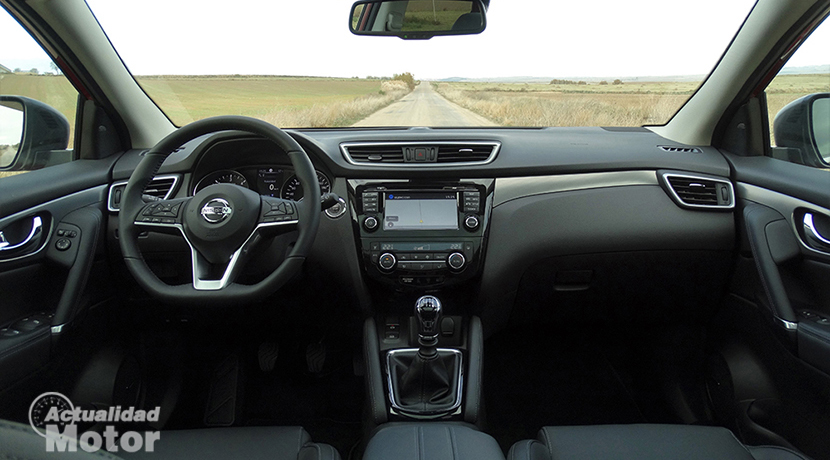
The Japanese brand has also made some modifications to the front seats with the objective of providing greater comfort and, in turn, greater lateral support. For the rest, it is difficult to find changes from one model to another. It is true that the brand has updated its infotainment system , but in our opinion, it still has a inferior quality compared to a good part of the competition and, on the other hand, the screen does not allow good visibility when the sun's rays hit it.
Regarding the visible materials used in most of the interior of the Nissan Qashqai, we find soft plastics in the upper zone and others harder and worse touch in the middle and lower part of the dashboard. The touch is improvable (although now it is better than before), but it is also fair to recognize that the adjustments are good and the feeling they give is that they will endure well over the years.
Nissan Qashqai range: Engines, transmissions, tractions and equipment
The mechanical offer of the Nissan Qashqai has not received changes , so we can still choose between four versions.In diesel it is offered with the 1.5 dCi of 110 CV -the one that uses this unit of tests- and the 1.6 dCi of 130 HP.
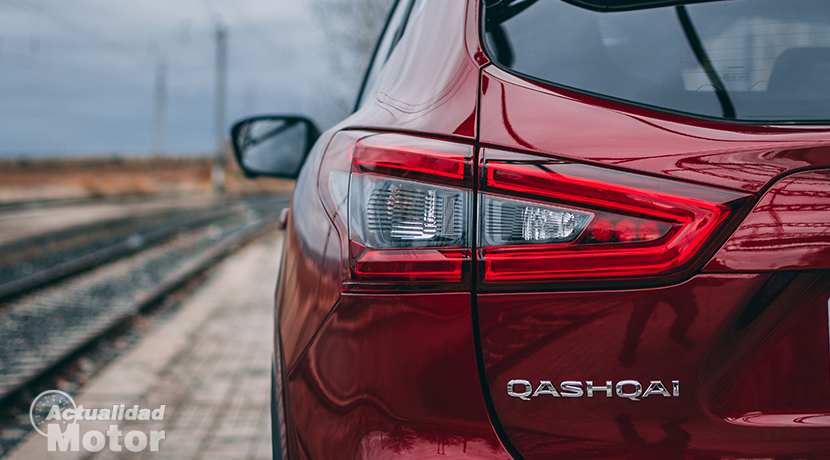
Moving to the gearboxes and transmissions , it depends on each mechanical version. The gasoline engines will always be front-wheel drive, with the 1.2 being also automatic. Meanwhile, in the diesel range the 1.5 dCi will always be manual and forward, while the 1.6 of 130 hp can be manual or automatic, but never combine automatic transmission with 4 × 4 traction.
As for the equipment levels , the Nissan Qashqai is available with 5 finishes, these being in order from least to greatest equipment: Visia, Acenta, N-Connecta, Tekna and Tekna + . The detailed equipment of each of them you have a few paragraphs below.
Motor 1.5 110 HP manual 4 × 2
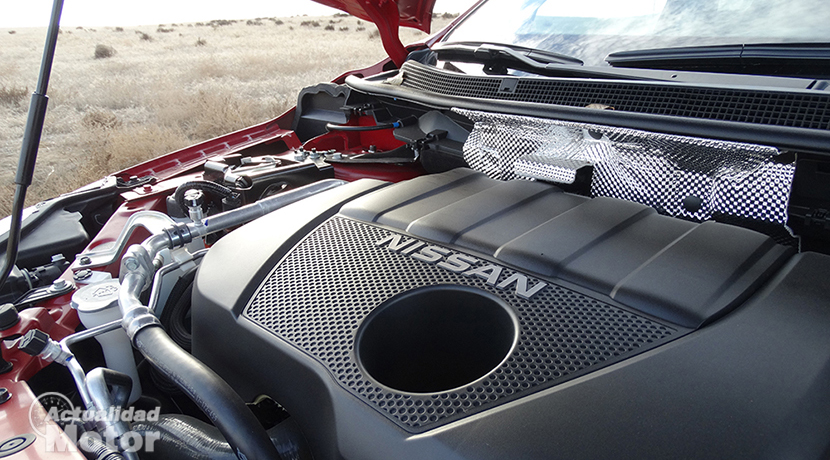
As we said above, the unit tested uses the 1.5 dCi 110 HP engine . The maximum power of this mechanics of Renault origin reaches 4,000 rpm, while its maximum torque of 260 Nm is available between 1,750 and 2,500 rpm. This 8-valve tetracylinder, direct injection by common rail and turbo variable geometry homologa a mixed consumption of 3.8 liters every 100 kilometers. Regarding its performance, the data speaks of a 0 to 100 in 11.9 seconds and a maximum speed of 182 km/h.
Dynamic behavior of the Nissan Qashqai span>
Nissan stated during the commercial release of this restyling that they had worked hard to improve the running quality of the Nissan Qashqai, reducing noise and vibrations that could reach the cabin, but also recalibrating the tuning of the suspension to improve ride comfort without compromising the model's curve stability.
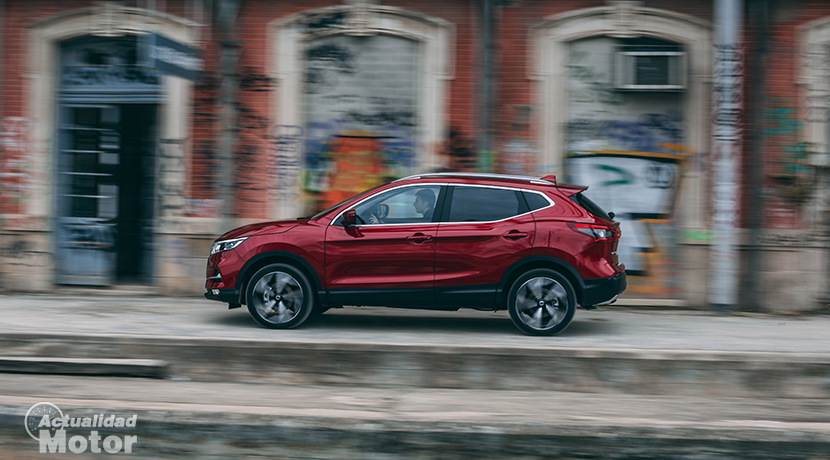
The most important improvements are not visible, but they do feel
I had not tried the Nissan Qashqai for several years, and the truth is that the improvements have seemed remarkable . Inside we can see less exterior noise and the engine, and we remember that we are facing a diesel block, which is always noisier than a gasoline mechanic. It is also isolated from the noise of rolling despite mounting sports tires-Michelin Pilot Sport 4-, which have a great grip but do not stand out for being especially quiet.
The sensations that this SUV transmits to us are very good. It is comfortable and with good aplomb to make trips by highway, it is relatively agile in areas of curves even though your address transmits very few sensations and it is not one of the most direct and precise within the segment. When passing over irregularities - and "lying guards" - filters correctly (even carrying 19-inch wheels and low profile tires). The body does not tilt excessively, although it is noticeable if we make a quite demanding driving.
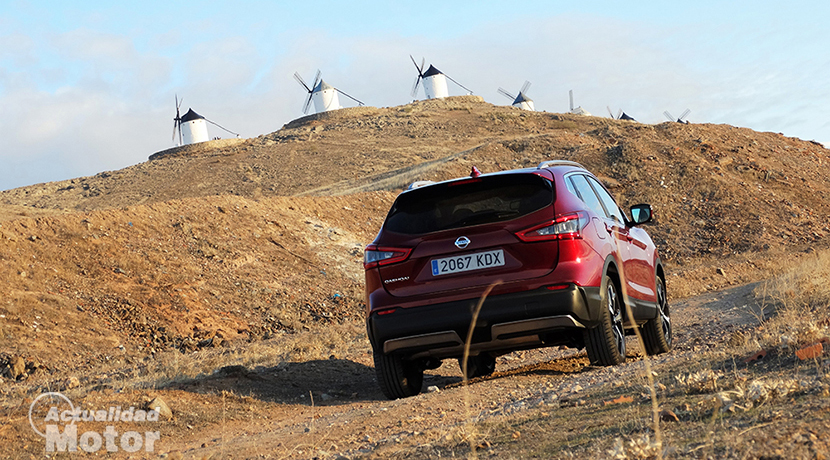
On the other hand, we had to ask if we were really facing the 110 HP motorization, because the response to medium and high speed is strong and it seemed to us that we were facing a more powerful version.Of course, below those 1,800 laps is lazy and forces us to lower a gear if the engine falls below that regime. Unless we are going to circulate a lot with cargo, this mechanics will be sufficient for normal use of the vehicle.
Consumptions Nissan Qashqai 1.5 dCi 110 HP
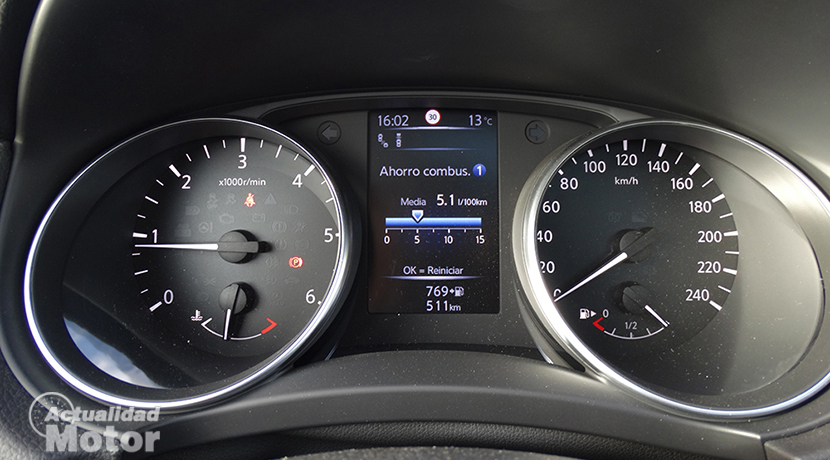
And what about the consumption of the Nissan Qashqai? It is the section that has impressed us most . During our test we have moved normally very close to 5 liters on average. In a normal driving, on the highway at 120 km/h we will obtain records of between 4.9 and 5.2 l/100 km; in secondary roads without unevenness it is feasible to walk around 4.5, while in the city it is easy to be below 6 liters. A very low consumption for a car like this. Our final average, after 800 kilometers traveled, was 5.1 l/100 km.
Conclusions of the Nissan Qashqai
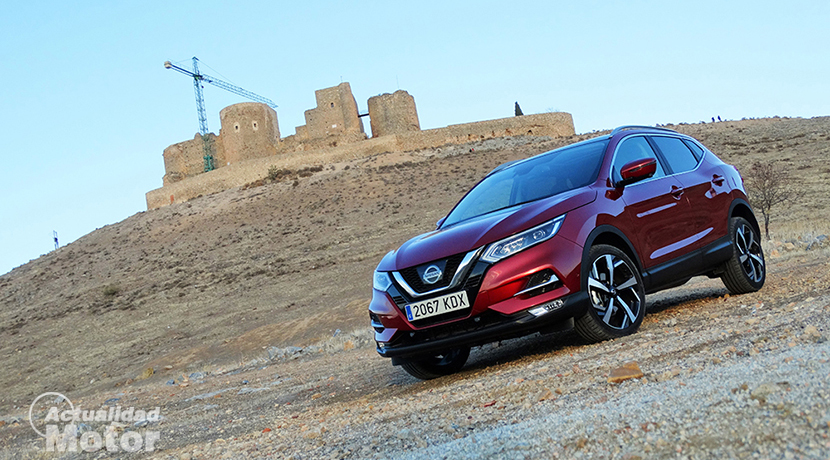
Even though this restyling does not change much the aesthetics of the Nissan Qashqai, the changes "not visible" of which the brand spoke to us months ago are more than remarkable. The diesel engine access is enough to move freely to this compact road and, in addition, spend very little. It is a comfortable and easy to drive car, with smooth and safe reactions. As points to improve, it is true that its interior could be more visually achieved, and also that its infotainment system should have improved more.
Overall, the Qashqai is a very round car , so it is not surprising that it is the best selling SUV of our country by far. In safety material , as you will see below in the equipment, some improvements appear. The predecessor model already had automatic emergency braking, traffic signal recognition, fatigue detector, lane change warning, 360 degree camera, blind spot control and some other functions, which have now been added to the detection of pedestrians in automatic braking and rear cross traffic alert.
If you are thinking of buying it in a few months you should know that in June you will receive the ProPilot security system active

